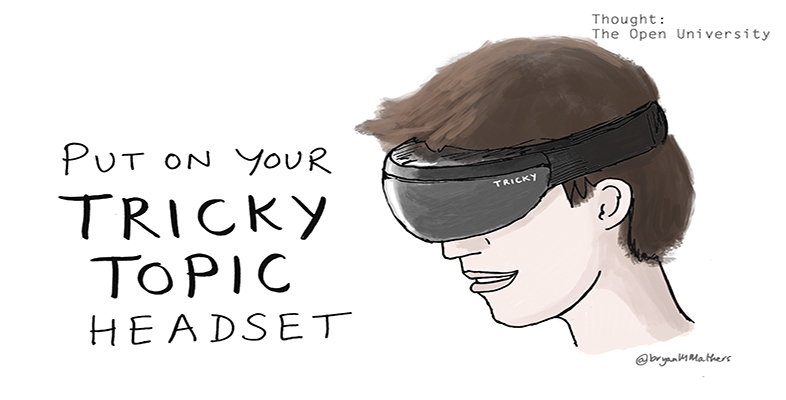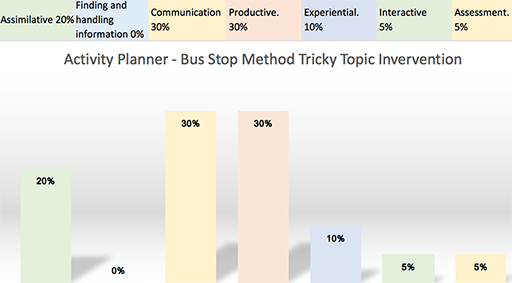3.2 Learning design applied to tricky topic interventions
The following example shows how learning design was used to structure tricky topic interventions in two UK secondary schools, where students had problems with the tricky topic long division in mathematics.
In both schools, students repeatedly encountered stumbling blocks when learning long division. The teachers went through the tricky topic process to identify the key stumbling blocks. Both schools used creative video-making as part of an intervention designed to uncover and address the students’ problems with this topic.
The students in school A were bottom set Year 8 (12 year-olds) maths students who were having remedial maths classes during lunch time. The intervention therefore needed to be structured to fit into a series of six 30 minute slots.
The students in school B were top-set students from Year 7 (11 year-olds) and the intervention was structured to fit across four maths lessons held two days per week in two consecutive weeks.
Students from both schools spent 4–5 hours on the intervention.
The interventions were designed as follows:
- Assimilative: teacher teaches the topic to students in class.
- Assessment (formative): students take a diagnostic quiz to assess their level of understanding of the topic.
- Interactive: students are given homework to view, explore and interact with a video ‘pen-cast’ created by their teacher to explain long division, reinforcing their learning using a ‘flipped learning’ approach.
- Communication/productive: students work in groups of three or four to create a paper storyboard for a video to illustrate long division. They are asked create a story that is set in a context that has meaning for them and which enables them to explain long division using characters and terms that are relevant to them as school children. During this activity, the teacher goes around the room from group to group so that students can share their ideas and get feedback.
- Communication/Productive/experiential: students work in their groups to shoot footage and perform their video using Flip videos, iPads or their personal smart phones. They adopt and change film-making roles as needed, working as producer, cameraman, actor, prop creator, animator as required. The teacher is available for advice and discussion on any stumbling blocks.
- Communication/Productive: students edit the footage to create the narrative outlined in the storyboards. As they do this, the teacher is available for advice and discussion on any stumbling blocks.
- Assessment: students repeat the diagnostic quiz to assess whether their understanding has improved.
- Communication: students view, comment on and applaud each other’s videos as a whole class activity. Constructive commenting helps students reflect on their learning by viewing their own and each other’s videos to reinforce their understanding.
Using the learning design activity planner, the creative video-making intervention has the activity profile in Figure 5:
You can see that this intervention relies heavily on collaboration and performance. Week 6 will demonstrate how it was able to reveal student misunderstandings to the teacher.

